
Yes, you can freeze cheese. Between advice from a friend who’s been a chef for 15 years, my own trial-and-error in the kitchen, and a lot of late-night research, I’ve learned that freezing cheese isn’t just possible, it’s practical.
Some cheeses come out perfect; others turn a little crumbly or dry. But most can still taste amazing if you freeze and thaw them the right way.
If you’ve ever wondered whether freezing cheese ruins it, or just want to stop wasting half-used blocks and bags, you’re in the right place. This guide explains exactly what works, what doesn’t, and how to get the best flavor and texture from every type of cheese you freeze.
Why Freeze Cheese in the First Place
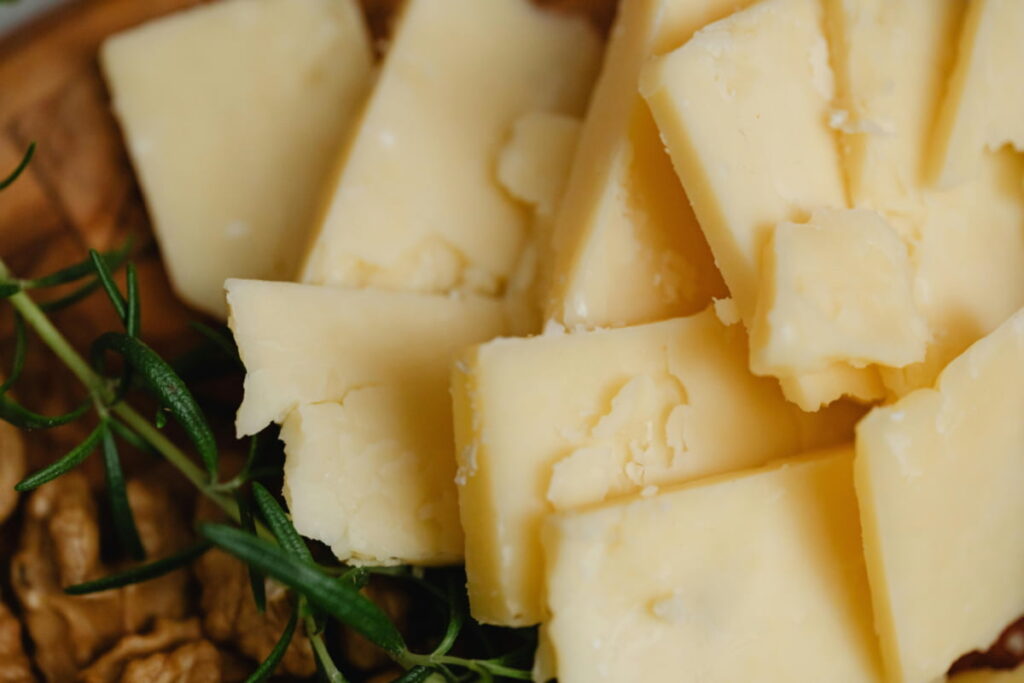
For me, freezing cheese started as a kitchen shortcut, but it’s turned into one of those habits that just makes sense. There are plenty of good reasons to do it:
- You bought too much on sale. Cheese deals feel great until you realize you can’t eat a whole block of cheddar in a week.
- You don’t use it fast enough. That “I’ll finish it later” wedge of gouda? Freezing keeps it from drying out or molding.
- You cook in bursts. Freeze portions now, grab what you need for pasta, pizza, or omelets later.
- You like being prepared. A stash of shredded mozzarella or Parmesan means instant dinner upgrades.
Freezing cheese isn’t just about saving money, it’s about stretching flavor, reducing waste, and always having something good ready to go.
And to really make it work, you need to know what’s happening inside the cheese when it freezes, that’s where the science comes in.
What Freezing Does to Cheese
Here’s the simple version: when cheese freezes, the water inside turns into ice crystals. Those crystals puncture the protein structure and can separate fat from moisture.
Once thawed, that structure doesn’t fully bounce back. The result? A little less creamy, sometimes a bit crumbly.
Freezing doesn’t ruin cheese; it just changes how it behaves. Some types hold up beautifully, while others need a little extra care.
Think of it like this:
- Low-moisture, high-fat cheeses (cheddar, gouda, Swiss) handle freezing best.
- Soft or fresh cheeses (ricotta, brie, mozzarella balls) need gentle handling or a change in how you use them afterward.
- Aged cheeses lose almost nothing, they’re already dry and dense.
The rule I now use in my own kitchen: if you’d melt it, you can freeze it.
Which Cheeses Freeze Best (and Which Don’t)
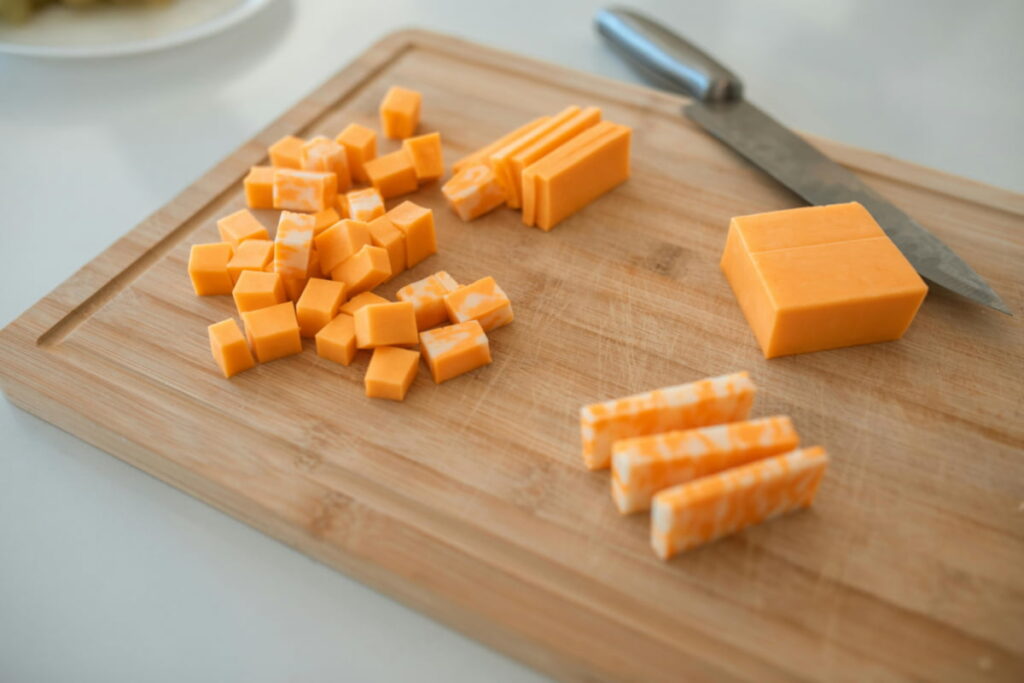
Let’s break it down by category. Each section includes what to expect, how I freeze it at home, and tips from pros and online food communities I’ve tested myself.
Hard and Semi-Hard Cheeses
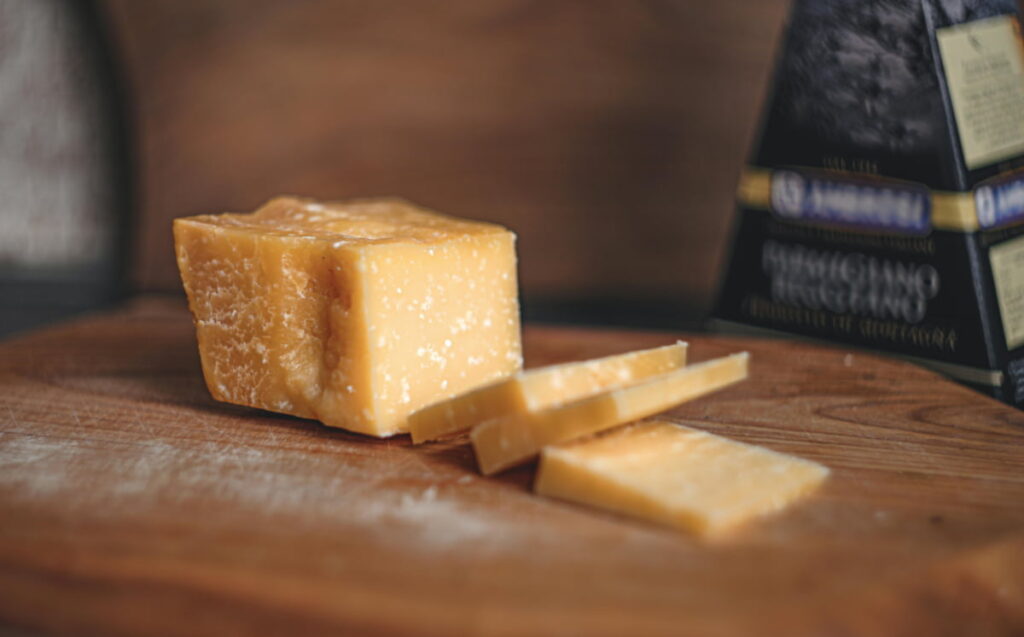
(Cheddar, Parmesan, Gouda, Swiss, Colby, Monterey Jack, Manchego, Asiago)
Freezability: ★★★★★
Best for: Grating, melting, casseroles, soups, baked dishes.
Hard cheeses are the freezer MVPs. I’ve kept blocks of cheddar frozen for months and tossed the shreds straight into mac and cheese, no complaints from anyone. The flavor stays strong, and the texture only dries a little.
If you freeze a whole block, expect it to feel a bit more crumbly when thawed, perfect for grating or melting, not ideal for slicing. Shredded or pre-portioned pieces thaw more evenly and keep their texture better.
How to freeze:
- Cut large blocks into smaller pieces or grate them.
- Wrap tightly in plastic wrap, then seal in a freezer bag.
- Squeeze out as much air as possible.
- Label and freeze for up to six months.
To thaw: Move to the fridge overnight or use straight from frozen in cooked dishes.
My tests: Cheese you shred yourself always freezes better. Store-bought shreds melt fine, but the anti-caking powder dulls both flavor and texture after thawing.
Chef’s note: My friend Trevanne, a chef with 20 years of experience, told me she never buys pre-frozen or bagged cheese for exactly that reason: “The coating messes with how it melts. Fresh-grated cheese freezes better and melts like butter,” she said.
Semi-Soft & Stretchy Cheeses
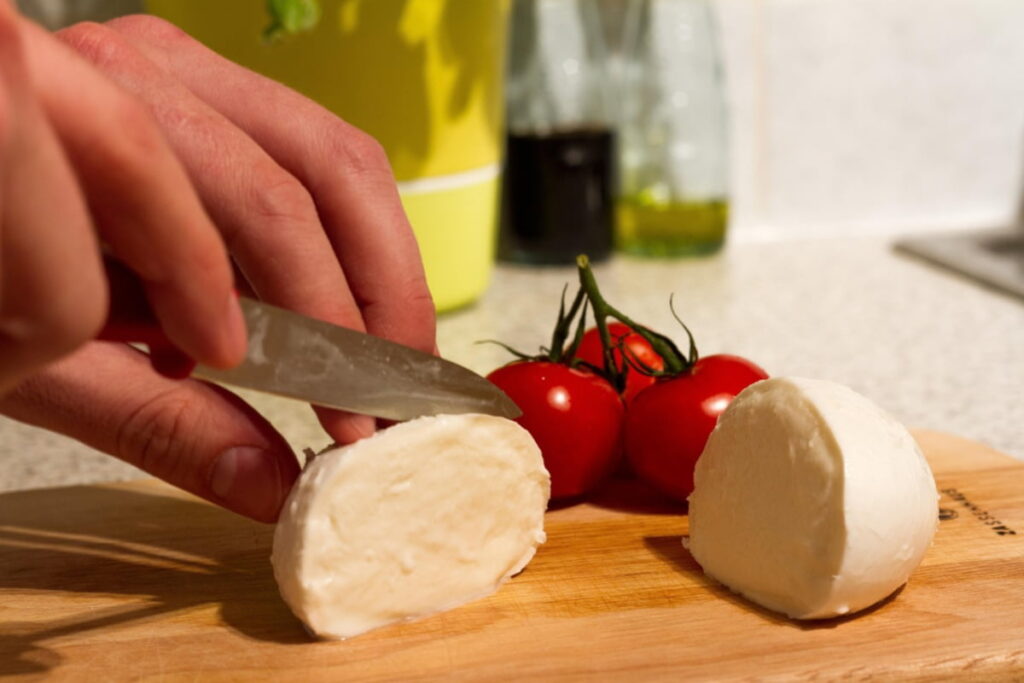
(Mozzarella, Provolone, Havarti, Fontina, Edam, Jarlsberg)
Freezability: ★★★★☆
Best for: Pizza, casseroles, grilled cheese, pasta bakes.
Semi-soft cheeses are surprisingly freezer-friendly, as long as you prep them right. Shredded mozzarella is basically made for the freezer (you’ll find the same thing on frozen pizzas), and provolone, Havarti, and Fontina hold up just as well.
To freeze:
- Shred or slice first, it helps them thaw evenly.
- Flash-freeze shreds on a baking sheet before bagging to prevent clumps.
- For slices, layer parchment between each one so they don’t stick.
- Press out as much air as possible before sealing, it helps prevent freezer burn.
What to expect when thawed:
Once thawed, these cheeses get a little softer and release some moisture, especially mozzarella. Fresh mozzarella balls (the kind stored in water) will weep and turn mushy, so save those for melting, not snacking.
Sliced or shredded versions bounce back better; once heated, they melt just like fresh.
Pro tip: Thaw in the fridge overnight, still sealed in the bag. The gradual thaw keeps the fat and moisture from separating.
Real-world use: I keep a freezer bag of shredded mozzarella on hand all year, it goes straight from the freezer into baked ziti, quesadillas, or grilled cheese with zero issues. Melted, you’d never know it was frozen.
Soft & Fresh Cheeses
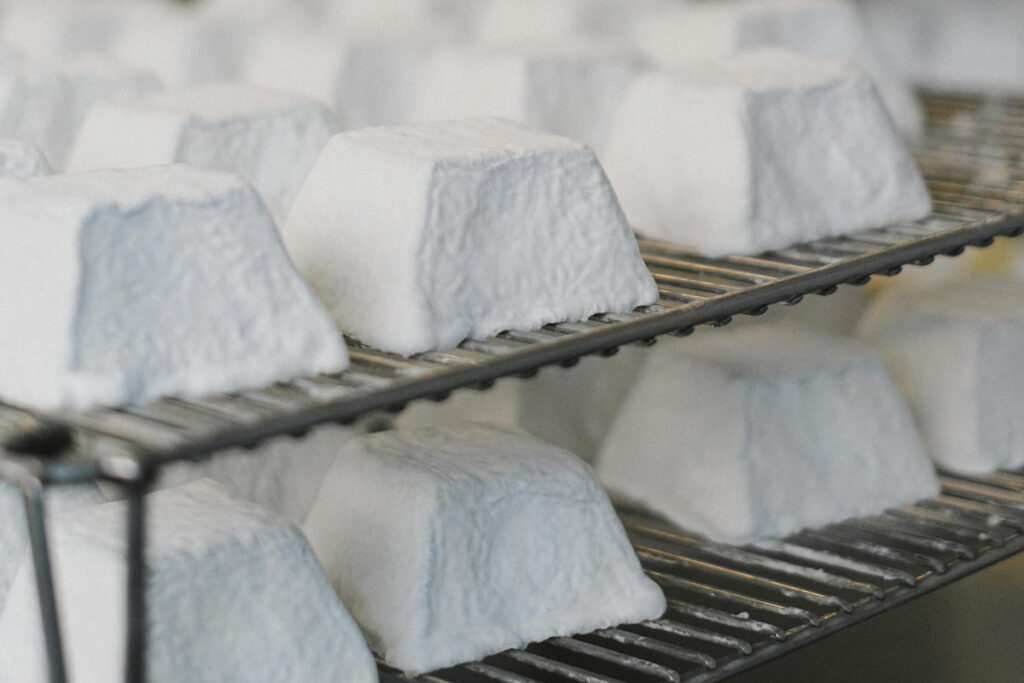
(Ricotta, Cottage Cheese, Cream Cheese, Feta, Goat Cheese)
Freezability: ★★★☆☆
Best for: Baking, fillings, cooked dishes.
These are the divas of the cheese world, freezing always changes them. Once thawed, the texture gets grainy and a bit separated, so they’re not ideal for cheese boards or snacking.
That said, they still shine when used the right way. The National Center for Home Food Preservation notes that soft cheeses like cream cheese, cottage cheese, and ricotta don’t freeze well on their own, but they work great once cooked or baked. Think lasagna, cheesecake, or dips , the heat brings them right back to life.
How I handle each:
- Ricotta: Freezes well in ½-cup portions for lasagna. It separates a bit, but a quick stir or blend restores the creaminess.
- Cottage Cheese: Gets grainy but works perfectly in pancakes, casseroles, or smoothies.
- Cream Cheese: Loses its smooth texture, but once re-whipped, it’s great for dips or cheesecake batter.
- Feta: Becomes crumbly but keeps its flavor. I freeze it in brine to cushion the texture change.
- Goat Cheese: Slice or portion into small logs before wrapping. Once thawed, it softens beautifully into hot dishes or spreads.
To freeze:
- Portion into airtight containers or wrap tightly.
- Add a layer of parchment on top to reduce air exposure.
- Freeze for up to 2–3 months.
Blue & Bloomy-Rind Cheeses
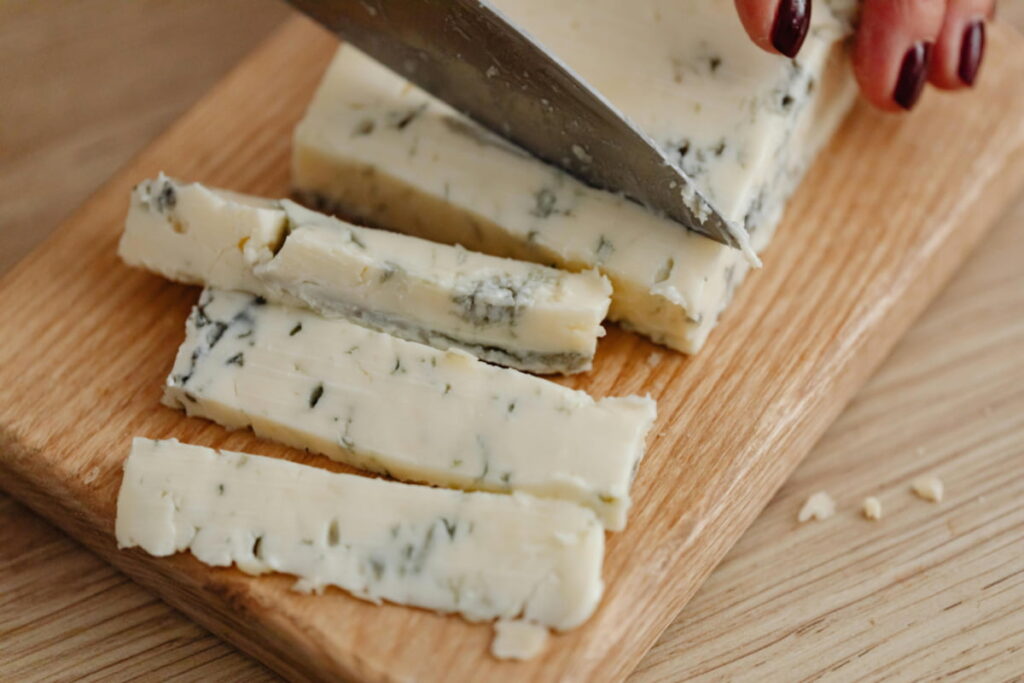
(Blue, Stilton, Gorgonzola, Brie, Camembert)
Freezability: ★★☆☆☆
Best for: Sauces, baked dishes, risotto, stuffed chicken.
Blue cheeses freeze better than their soft cousins, the strong flavor hides small texture shifts.
But when it comes to Brie and Camembert, freezing is more of a last resort. The rind can turn slightly rubbery, and the creamy center doesn’t thaw evenly.
What to expect when thawed:
These cheeses get a little drier and more crumbly after freezing. The flavor stays bold (sometimes even more concentrated), but you’ll lose that luxurious, gooey texture. Think cooking cheese, not charcuterie cheese.
To freeze:
- Cut into small wedges, smaller pieces thaw more evenly.
- Wrap each piece in wax paper, then plastic wrap, then foil.
- Freeze for up to 2 months.
My tests: When I froze wedges of Gorgonzola, they crumbled more easily but melted beautifully into cream sauce, the flavor actually deepened a bit.
How to use after thawing: Add to pasta sauces, risotto, or burgers where you want a punch of flavor.
Skip the cheese board, that luscious center won’t come back once it’s been frozen.
Processed & Specialty Cheeses
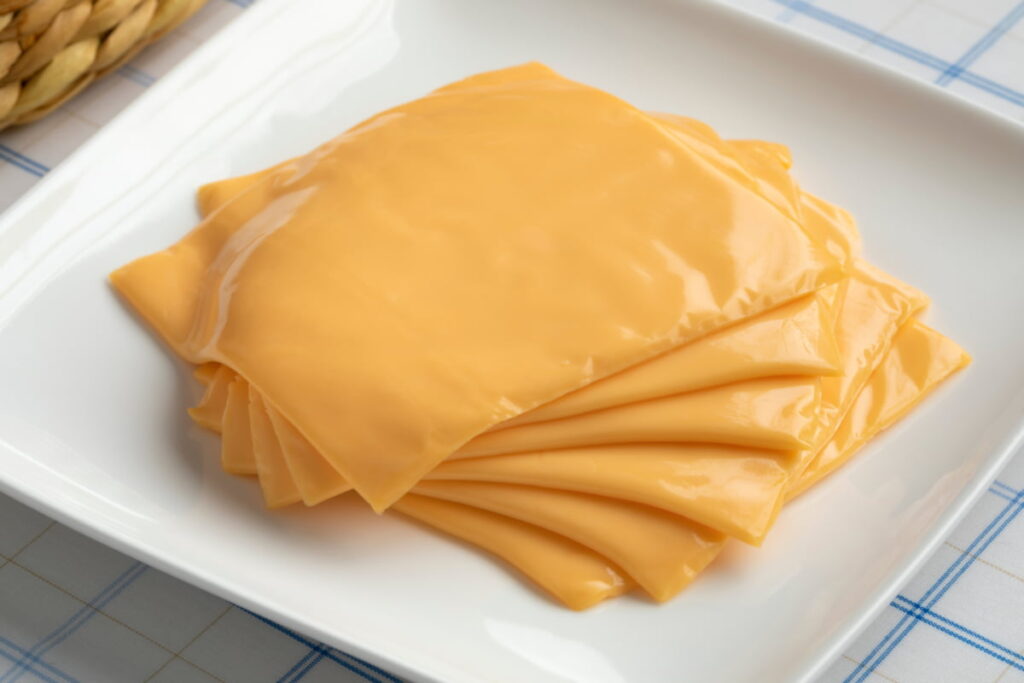
(American, Halloumi, Vegan / Plant-Based)
Freezability:
- American: ★★★★★
- Halloumi: ★★★★☆
- Vegan: ★★★☆☆
American cheese, whether deli-sliced or Kraft singles, freezes like a dream. It’s engineered for it. I separate slices with wax paper, seal them airtight, and they thaw almost identically to fresh.
Halloumi is the opposite of most cheeses: firm, salty, and heat-loving. It doesn’t even melt much, so it shrugs off freezing entirely. Slice, wrap, and freeze; thaw overnight before grilling.
Vegan cheeses are hit or miss. Coconut-oil-based shreds tend to freeze well, but nut-based or starch-heavy versions can become chalky.
How to Freeze Cheese Step-by-Step
This is the method I use for every cheese — from cheddar blocks to soft rounds. It’s simple, foolproof, and keeps the texture as close to fresh as possible.
- Portion first. Don’t freeze one giant block you’ll have to thaw all at once. Cut, shred, or cube into usable sizes.
- Wrap well. Use plastic wrap plus a freezer bag, or vacuum seal if you can. Air is the enemy of good cheese.
- Label clearly. Type and date — your future self will thank you.
- Freeze flat. Saves space and prevents cracking, especially for softer cheeses.
- Use within 6 months for best flavor and texture (3 months for soft or fresh cheeses).
When I tested this, I froze three bags of shredded cheddar: one double-wrapped, one loosely bagged, and one vacuum-sealed. After three months, the double-wrapped and vacuum-sealed bags tasted perfect. The loosely sealed one? Dry and brittle.
Moral of the story: control the air, control the outcome.
Thawing Cheese Without Ruining It
Thawing is the real make-or-break moment. Do it wrong, and even the best frozen cheese turns rubbery or grainy.
Like most people, I used to thaw every cheese the same way, but as my friend Chef Trevanne likes to remind me, “there’s no one-size-fits-all with cheese.”
Here’s what works best:
- Always thaw slowly in the refrigerator. A gradual thaw lets moisture reabsorb into the fat, which keeps texture intact.
- Never microwave. It forces water out and makes cheese tough or oily.
- Pat soft cheeses dry with a paper towel after thawing if moisture collects.
- For shredded cheese, skip thawing entirely. Use it straight from the freezer in hot dishes, it melts faster and more evenly.
I do this all the time with frozen blend, when I am making my famous mac and cheese. I just toss it right into the post and it melts perfectly.
Best (and Worst) Ways to Use Frozen Cheese
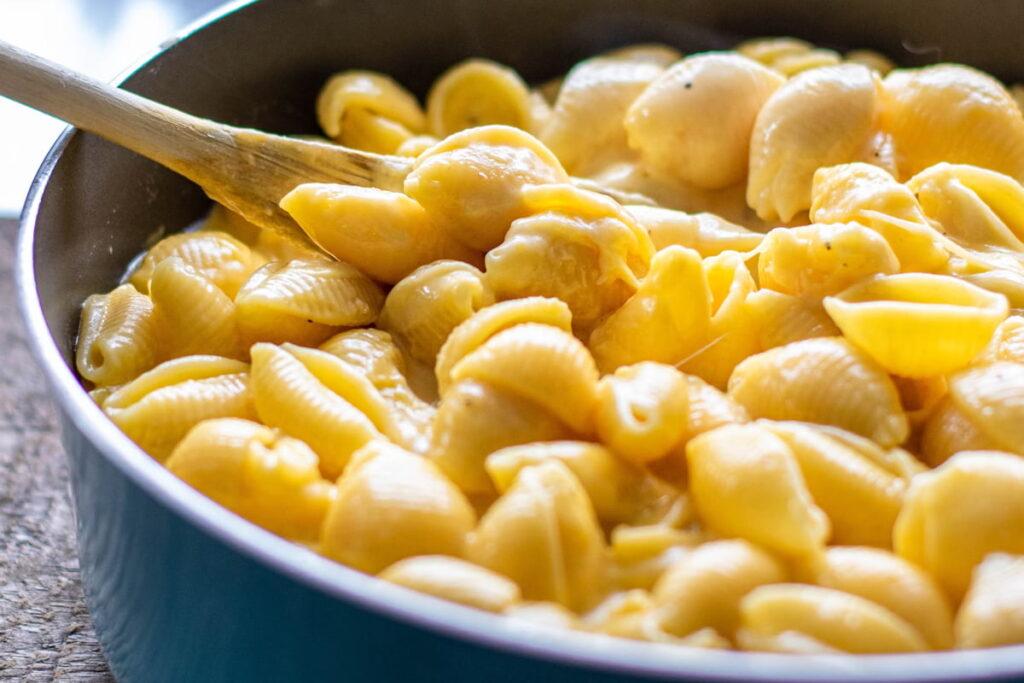
Of course, there are many different and (not so good) ways to use frozen cheese.
Best Uses
- Melting: Pizza, grilled cheese, mac and cheese, enchiladas, casseroles.
- Cooking: Soups, sauces, scrambled eggs, pasta bakes.
- Baking: Biscuits, quiches, savory pastries.
Frozen cheese shines when melted or blended into recipes. Any dryness disappears once it’s heated.
Worst Uses
- Cheese boards or fancy platters. Don’t do it, the texture changes too much.
- Cold sandwiches or snacks. It’ll taste fine but feel weird, kind of rubbery or crumbly.
Basically, if you’re going to melt it, freeze it. If you’re going to show it off, buy it fresh. That’s my rule
Common Mistakes (and How I Fixed Them)
When I first started freezing cheese, I was doing pretty much everything wrong. No method, no plan, just vibes and frostbite. Here’s what I learned after a few freezer fails:
- Freezing big blocks without wrapping them tight. I used to just toss a block in a bag and call it a day. It came out dry, icy, and sad. Now I double-wrap, plastic wrap then a freezer bag, and it actually tastes like cheese again.
- Thawing on the counter. Guilty. I thought I was saving time, but I was just creating a sweaty, gummy mess. Turns out, slow thawing in the fridge is the only way to keep it decent.
- Refreezing after thawing. I didn’t know this was a thing you shouldn’t do. The texture broke down so bad it was like cheesy sand. Now I freeze smaller portions so I never have to refreeze.
- Expecting it to be perfect. Ricotta, cream cheese, feta, they all change after freezing. I learned to use them for baking or cooking instead of spreading. Still delicious, just different.
How Long Can Cheese Stay Frozen?
| Cheese Type | Best Within | Notes |
| Hard / Semi-Hard | 4–6 months | Little flavor loss |
| Semi-Soft | 3–4 months | Slight drying |
| Soft / Fresh | 2–3 months | Blend or cook after thawing |
| Blue / Bloomy | 2 months | Crumbles more |
| Processed / American | 6 months | Texture unchanged |
| Vegan | 3 months | Results vary |
Freeze It Like You Mean It
Freezing cheese isn’t just a kitchen hack, it’s a small act of food wisdom. Once you know how to wrap it, thaw it, and use it right, you can turn almost any cheese into something worth saving (and still worth eating).
I’ve made my share of freezer mistakes, but cheese? It’s one I’ve mastered, and it’s made cooking so much easier.
If you liked this, check out my other freezing guides, from fruit and herbs to sauces and baked goods, and turn your freezer into your most underrated kitchen tool.
